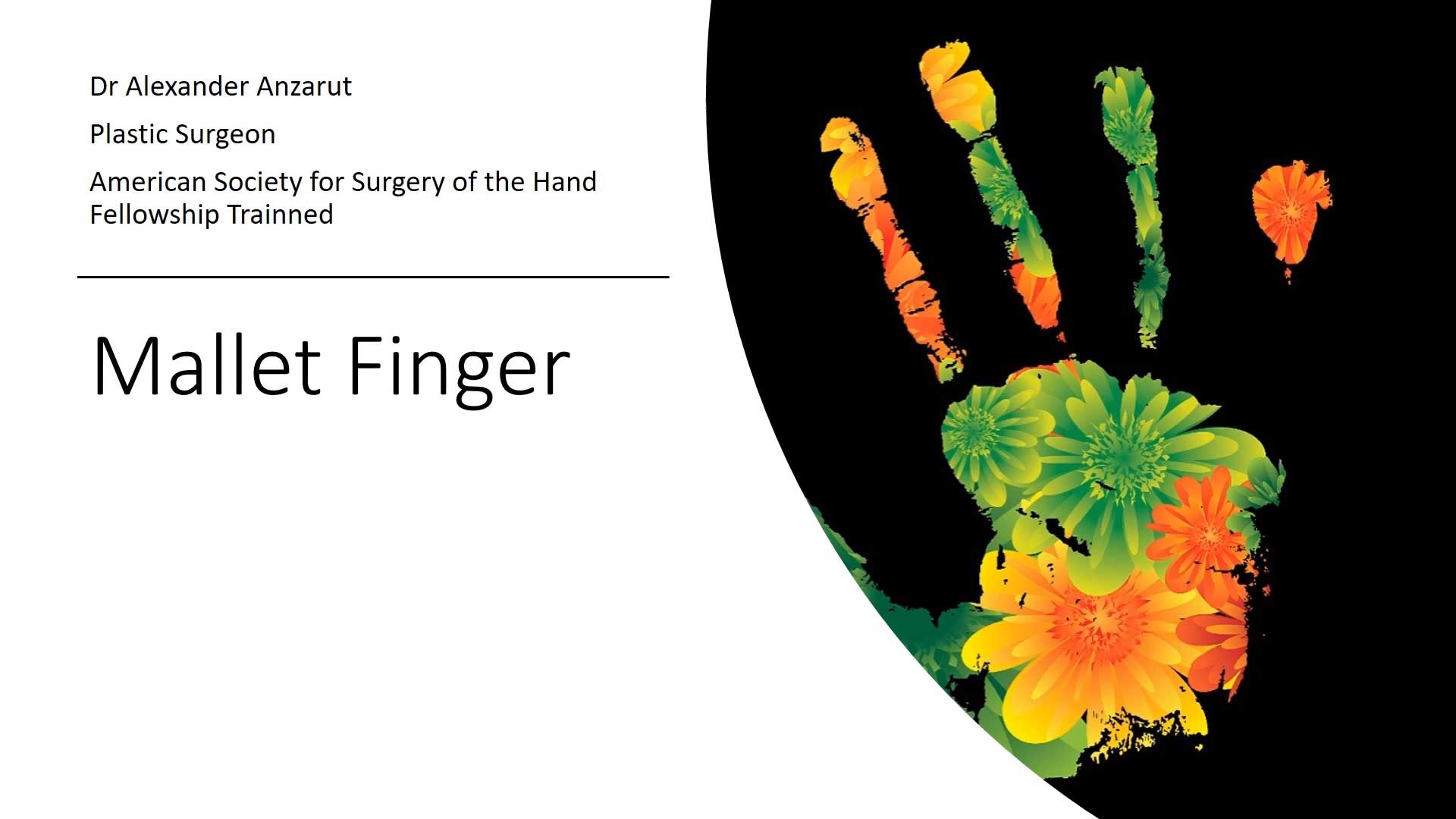
What is a Mallet Finger?
- A mallet finger occurs when the tendon responsible for straightening the last finger joint, also called the DIP joint as seen here in this picture, is injured.
- As a result, one cannot straighten the last fingertip joint or the DIP joint on our own. If you push with your other finger, you can straighten it out, but you can’t straighten it on your own and that is the DIP joint, that joint before we called the PIP joint.
What are the Causes of Mallet Finger?
The causes of mallet finger are several.
- One of the possibilities is that the tendon can be torn when the fingertip is forcibly bent. If one has a strong downward force on the finger, such as a ball hitting the finger, that can cause a tear in the tendon over this DIP region, as shown in the first diagram.
- The tendon could be cut sharply by a knife in the kitchen or a skill-saw.
- The bone where the tendon attaches may break right off, and we call that an avulsion and that’s shown here in the bottom picture.
How is it Mallet Finger Treated?
- A mallet finger s treated by bringing the tendon ends back together to allow those two ends of the tendons to heal.
- The ends must be in contact for approximately 12 weeks.
- A splint is used to hold the finger joint straight and bring the tendon ends together. This is an example of a very successful type of mallet splint. The splint can be placed on the top of the finger, as seen here and then held in place with tape or an elastic bandage. After a period of time, the splint can be removed from the top of the finger and placed on the bottom of the finger to rest the skin and give the skin on the top of the finger a chance to breathe.
What are the Risks of Splinting?
- The other finger joint, the PIP joint, as we discussed before, must be kept mobile to avoid stiffness. In this picture here, in the top picture, this splint is too long. The DIP, which is here, is correctly splinted; however, the PIP, which is over here, is, unfortunately, splinted as well and if that happens for 12 weeks, this PIP joint can become irreversibly stiff.
- The skin must be cared for to avoid ulceration as well.
- If a splint is left on or the foam on the splint becomes wet and sits against the skin, one may develop an ulceration as seen in this picture. So, the skin underneath the splint needs to be checked. Sometimes the splint needs to be shifted from the top to the bottom of the finger.
- If the fingertip is bent during this time, even for a second, the 12 weeks may need to start over again. So, even when you’re changing your splint and checking the skin, you need to keep this DIP joint straight.
What Happens After Splinting?
- The tips should be straight.
- Regaining the bend in the tip may take a while.
- The top of the finger may feel tight for a while because there will be some scarring and stiffness in those tendons.
- Full recovery often will take six to 12 months until that tightness goes.
Watch Dr. Anzarut’s Video on Mallet Finger